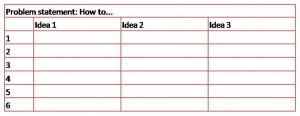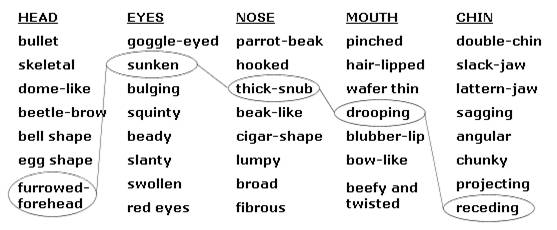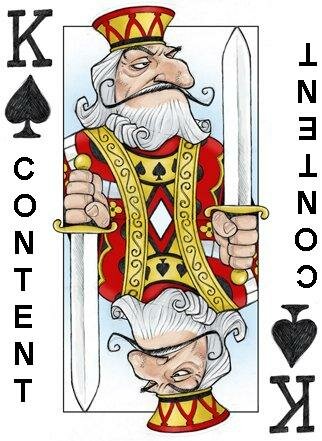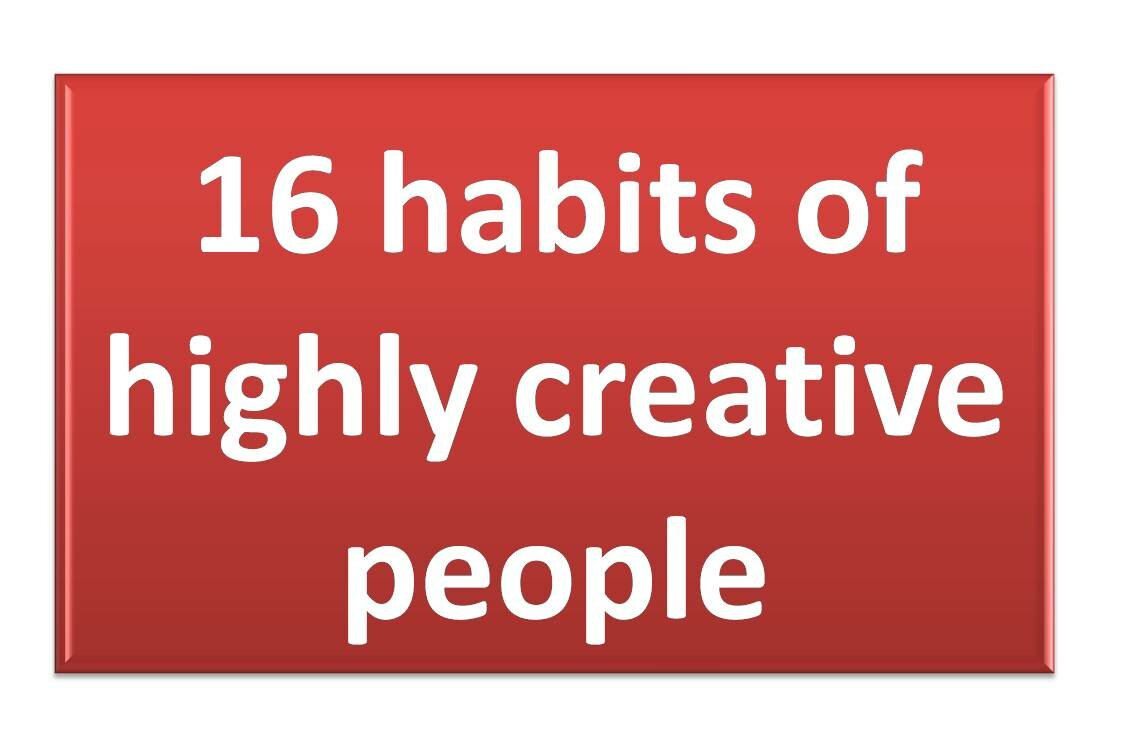Stuck for an idea? Try this.
|
|||||||||
Shalu Wasu | Feb 12, 2010
 When was the last time you were stuck for an idea? It happens with everyone, but the trick is not to remain stuck for long. What if you had a magic wand and you could come up with ideas about anything at will? How would it change your life? This article lists down some of the most useful and most popular techniques and methods for generating ideas. Most of these methods work for individuals as well as in group situations.
When was the last time you were stuck for an idea? It happens with everyone, but the trick is not to remain stuck for long. What if you had a magic wand and you could come up with ideas about anything at will? How would it change your life? This article lists down some of the most useful and most popular techniques and methods for generating ideas. Most of these methods work for individuals as well as in group situations.
This is a monster article. I could have split this into 9 different posts but I feel having all these techniques together in one place is much more helpful. Some general guidelines before we begin:
- Mix and match creativity methods and tools.
- Share these tools with your colleagues and friends.
- Have a favourite method. Once you have a favourite method that you use more often, you will gain mastery over it and the process of generating ideas will become more effective and efficient.
- Keep changing your favourite method! This is useful because once you gain mastery over more methods you will be able to mix and match creativity methods with ease, boosting your productivity to a higher level.
- Never evaluate ideas at the generation stage.
Let’s get started now!
(1) Brainstorming – perhaps the most popular idea generation technique
Brainstorming is the classic creativity technique used for generating a lot of ideas. There is no better way to learn or to get better at this technique than to actually practice it. Brainstorming works well in a team as well as individually.
Brainstorming is a lateral thinking process. It asks that people come up with ideas and thoughts that seem at first to be a bit shocking or crazy. You can then change and improve them into ideas that are useful, and often stunningly original.
Guidelines for brainstorming
- No criticisms or judgments or reactions to be made while ideas are being generated.
- All ideas must be welcome. No matter how silly or farout they seem.
- Absolutely no discussion should take place during the brainstorming activity. Talking about the ideas will take place after brainstorming is complete.
- Use others’ ideas as stepping stones to think of a better idea.
- If you are doing brainstorming in a group write all ideas on a flipchart or board so the whole group can easily see them.
- The last step is to evaluate the ideas against some criteria.
Variations in brainstorming
Use the random word association method(coming up later) to spice up your brainstorming!
The final stretch! When your feel that you “can’t think of any more ideas” then give yourself a few more minutes as the best ideas sometimes come towards the end of long drawn out thought processes.
Brainstorming can even be done in groups or individually. In fact, when done individually, brainstorming may even produce a wider range of ideas than group brainstorming as individuals are free to explore ideas in their own time without any fear of criticism. On the other hand, groups are usually able to develop the ideas more effectively due to the wider range of diversity.
If the brainstormers have difficulty in coming up with solutions, we can reframe the problem.
(2) Brainwriting
Brainwriting works very well in a group situation, especially when all group members are aware of the situation. There are many variations of brainstorming, but the general process is that ideas are first recorded by the individual who thought of them. They are then passed on to the next person who uses them as a trigger for their own ideas. It continues like this till everyone has had a chance to contribute ideas on every sheet.
Brainwriting 6-3-5
The name brainwriting 6-3-5 comes from the process of having 6 people write 3 ideas in 5 minutes. Each person has a blank 6-3-5 worksheet like this:

Steps
- Write the problem statement at the top of their worksheet (everyone needs to do this) word for word from an agreed problem definition.
- Write 3 ideas on the top row of the worksheet in 5 minutes in a complete and concise sentence.
- At the end of 5 minutes or when everyone has finished writing, pass the worksheet to the person on your right. You then add three more ideas. The process continues until the worksheet is completed.
- There will now be a total of 108 ideas on the 6 worksheets! WOW!!
(3) Leonardo da Vinci’s Idea Box
This one is my favourite. This technique was developed by Leonardo da Vinci. He is considered by many to be the most creative man who ever lived! This method is particularly applicable when we are trying to come up with options for a new product or service. Below is a hypothetical example of a box similar to one that da Vinci might have constructed while trying to come up with different kinds of faces that he could draw.
While the number of items in each category is relatively small, there are literally thousands of possible combinations of the listed features. The circled features indicate only one out of thousands of different groupings of features that could be used. By using this technique we can literally come up with hundreds of possible combinations of attributes very quickly and surely we will find one that we like.
Try it out with an example about choosing the positioning for a new restaurant.
(4) Switching
This creativity method is particularly useful in relationships. The objective is to understand the other person better to be able to adapt our communication and enjoy a better relationship. For good results, take upwards of 15 minutes for this exercise.
- You are A.
- Identify a person who you want to improve your relationship with.
- Gather all the information that you know about this person in your mind.
- Recollect all your past experiences with this person in your mind.
- Now, close your eyes and try to BE that person. Assume that you are him/her with all the history, baggage, relationships, education, experience, desire, motivation, beliefs etc. Don’t just pretend, become this person. You are now, this person X.
- Now, imagine that the original you is interacting with you (person X). What did you (person X) understand from this conversation?
- What does person X think about A? What does he/she like and dislike about A?
- If person X was to give advice to A about improving their relationships, what would it be?
- Now, come back to being person A. Did you like and appreciate the advice? What will you do about it?
(5) The Reversal Method
The reversal method for examining a problem or generating new ideas takes a situation as it is and reverses it! (turns it around, inside out, backwards, or upside down)
A given situation can be “reversed” in several ways; there is no one standard way. For example, the situation “a teacher instructing students” could be reversed as:
- Students instructing the teacher.
- The teacher uninstructing students.
- Students instructing themselves.
- Students instructing each other.
- Teacher instructing himself.
- Students uninstructing (correcting?) the teacher.
Example: A motorist came up behind a flock of sheep in the middle of the road and told the shepherd to move the sheep to the side so that he could drive through. The shepherd knew that on such a narrow roadside, he could not easily keep all his sheep off the road at once. Reversal: Instead of ‘driving around the sheep’, ‘drive the sheep around the car’! Have the car stop and drive the sheep around and in back of it.
Sometimes it’s easier to think negatively first and then reverse the negatives.
(6) Provocation
Provocation is an important lateral thinking technique. It works by moving your thinking out of the established patterns that you use to solve problems. As explained earlier, we think by recognizing patterns and reacting to them. These reactions come from our past experiences and logical extensions to those experiences. Often we do not think outside these patterns. While we may know the answer as part of a different type of problem, the structure of our brains makes it difficult for us to link this in. Provocation, originally developed by Edward de Bono, is one of the tools we use to make links between these patterns.
We begin by making deliberately stupid statements (provocations), in which something we take for granted about the situation is not true. Statements need to be stupid to shock our minds out of existing ways of thinking. Once we have made a provocative statement, we then suspend judgment and use that statement to generate ideas. Provocations give us original starting points for creative thinking.
As an example, we could make a statement that houses should not have roofs. Normally this would not be a good idea! However this leads one to think of houses with opening roofs, or houses with glass roofs. These would allow you to lie in bed and look up at the stars.
Once we have made the provocation, we can use it in a number of different ways, by examining:
- The consequences of the statement.
- What the benefits would be.
- What special circumstances would make it a sensible solution.
- The principles needed to support it and make it work.
- How it would work moment-to-moment.
- What would happen if a sequence of events was changed.
Example: The owner of a video-hire shop is looking at new ideas for business to compete with the internet. She starts with the provocation ‘Customers should not pay to borrow videos’.
She then examines the provocation.
Consequences: The shop would get no rental revenue and therefore would need alternative sources of cash. It would be cheaper to borrow the video from the shop than to download the film or order it from a catalogue.
Benefits: Many more people would come to borrow videos. More people would pass through the shop. The shop would spoil the market for other video shops in the area.
Circumstances: The shop would need other revenue. Perhaps the owner could sell advertising in the shop, or sell popcorn, sweets, bottles of wine or pizzas to people borrowing films. This would make her shop a one-stop ‘night at home’ shop. Perhaps it would only lend videos to people who had absorbed a 30-second commercial or completed a market research questionnaire.
After using the provocation, the owner of the video shop decides to run an experiment for several months. She will allow customers to borrow the top ten videos free (but naturally will fine them for late returns). She puts the videos at the back of the shop. In front of them she places displays of bottles of wine, soft drinks, popcorn and sweets so that customers have to walk past them to get to the videos. Next to the film return counter she sells merchandise from the top ten films being hired.
If the approach is a success she will open a pizza stand inside the shop.
 (7) Using Random Words
(7) Using Random Words
Random words is an idea creating technique in which we bring in an unrelated idea into the problem and forcing connections or similarities between the two.
Example: Get a friend who is behind in his payments to the store to catch up and pay regularly.
Random word: Potato
Ideas: Feed him, peel him, slice him up–divide his payments into smaller pieces, as in every week, and send in the monthly payment made up from that. Fry him when he doesn’t pay, plant him in the ground. Salt him–give him some “flavorful” incentive to pay, as in some gift or verbal reward. Baked potato, butter and sour cream. Potato-eyes growth–convince him his credit rating will grow and be valuable to him if he pays regularly.
Choose one of the following items and use its assigned random word to stimulate ideas for improving the item.
- Improve an automatic dishwasher using the trigger concept of stone.
- Improve a toy store using the trigger concept of hair.
- Improve a library using the trigger concept of candy.
(8) The ‘what if’ question
A major block to creativity for many of us is the mind’s fierce grasp on reality. This very factor that keeps us sane also keeps us from thinking beyond what we know to be true. What-iffing is a tool for releasing the mind, for delivering us from being blocked by reality.
In its simplest form, what-iffing involves describing an imagined action or solution and then examining the probable associated facts, consequences, or events. Instead of quickly saying, “That sounds dumb,” or “That would never work,” and leaving our criticism vague, we trace as exactly as our reasonable minds can generate the specific implications or consequences of the newly imagined fact.
In more practical terms, though, thinking about what does not exist is about the only way we have of eventually making it exist. In other words, the first step to implementing a new reality is to imagine it.
Some what if examples:
- What if we could read other people’s minds (and they could read ours)?
- What if all marriages were automatically cancelled by the state every three years?
- What if anyone could set up as a doctor?
- What if each home could run the television only one hour a week?
- What if exams and grades were abolished in college?
- What if our pets could talk?
- What if petrol cost $100 a litre?
- What if we never had to sleep?
- What if everybody looked almost exactly alike?
- What if clocks and watches didn’t exist and daylight lasted six months?
Can you think of 5 what-if questions related to a problem or issue that you are dealing with currently?
(9) SCAMPER
SCAMPER is a checklist that helps you to think of changes you can make to an existing product to create a new one. You can use these changes either as direct suggestions or as starting points for lateral thinking.
Developed by Bob Eberle, the changes SCAMPER stands for are:
S – Substitute – components, materials, people.
C – Combine – mix, combine with other assemblies or services, integrate.
A – Adapt – alter, change function, use part of another element.
M – Modify – increase or reduce in scale, change shape, modify attributes (e.g. colour).
P – Put to another use.
E – Eliminate – remove elements, simplify, reduce to core functionality.
R – Reverse – turn inside out or upside down, also use of reversal.
Example:
As an example, imagine that you are a manufacturer of nuts and bolts, and you were looking for new products. SCAMPER would give you:
Substitute – use of high tech materials for niche markets, such as high speed steel? Carbon fiber? Plastics? Glass? Non-reactive material?
Combine – integrate nut and bolt? Bolt and washer? Bolt and spanner?
Adapt – put Allen key or Star head on bolt? Countersink head?
Modify – produce bolts for watches or bridges? Produce different shaped bolts (e.g. screw in plugs)? Pre-painted green bolts?
Put to another use – bolts as hinge pins? As axles?
Eliminate – eliminate nuts, washers, heads, thread, etc.
Reverse – make dies as well as bolts, make bolts that cut threads for themselves in material, etc.
I hope you find this useful!
Filed Under: Growth
|
|||||||||




















These are some great ideas for brainstorming! I’m definitely going to bookmark this for future use! Very thorough…
very good article.
Very nice article. Worth keeping a printout of this article by your side, when problem overload stunts your thinking.
A must read for persons affectedy by jobs retrenchments/ economic crisis.A real booster. Thanks SHALU.
Great list of techniques for sparking creative thinking. As a facilitator and team building provider, I am constantly looking for new ways to inspire my clients to be more creative and to “think outside of the box.”